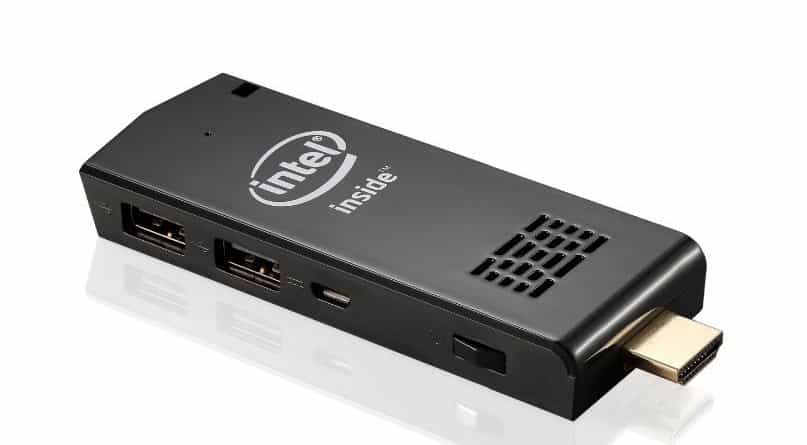
Digital Signage Player
Digital Signage Player In today's fast-paced digital world, effective communication is vital for businesses and organizations to engage with their target audiences. One of the most powerful tools in modern advertising and information display is the Digital Signage Player. This cutting-edge technology has revolutionized the way content is presented and communicated in various settings, from retail stores and corporate offices to public spaces and educational institutions. In this article, we will delve into the world of Digital Signage Players, exploring their functionalities, benefits, and the impact they have on shaping the future of communication.
What is a Digital Signage Player?
A Digital Signage Player is a hardware device or software application that serves as the engine behind the dynamic display of multimedia content on digital screens or displays. It enables businesses and organizations to showcase a wide range of content, including images, videos, text, live feeds, and interactive elements, to engage their audience effectively. These players can be standalone devices, integrated into screens, or cloud-based solutions that can be managed remotely.
The Functionality of Digital Signage Players:
Digital Signage Players offer a plethora of features to deliver captivating and engaging content. Some key functionalities include:
a. Content Scheduling and Management: Users can schedule content to display at specific times, ensuring that the right message reaches the right audience at the right time. Content management systems allow easy updates and changes, streamlining the process of keeping information relevant and up-to-date.
b. Remote Management: Cloud-based Digital Signage Players offer the advantage of remote management, allowing users to control and update content across multiple screens or locations from a centralized platform. This is particularly beneficial for businesses with a widespread presence or for digital out-of-home advertising networks.
c. Interactive Capabilities: Advanced Digital Signage Players support touch and gesture interactions, enabling users to engage with the content directly. This interactivity enhances user experience and creates memorable brand interactions.
d. Analytics and Insights: Some Digital Signage Players provide analytics tools that track audience engagement, enabling businesses to measure the effectiveness of their content and make data-driven decisions for better performance.
The Benefits of Digital Signage Players:
a. Enhanced Engagement: Traditional static displays are limited in their ability to capture attention. Digital Signage Players, with their dynamic and interactive content, grab the audience's attention and keep them engaged for longer periods.
b. Real-time Updates: Unlike printed materials, Digital Signage Players allow instant updates to content. This agility is particularly advantageous in fast-changing environments like retail, where promotions and offers can be time-sensitive.
c. Cost-effectiveness: While initial setup costs might be higher compared to static displays, the ability to reuse and update content without printing expenses makes Digital Signage Players more cost-effective in the long run.
d. Eco-friendly Solution: By eliminating the need for printed materials, Digital Signage Players contribute to reducing paper waste, making them a greener and environmentally friendly choice.
e. Improved Customer Experience: In retail environments, interactive Digital Signage Players can help shoppers explore products, find relevant information, and make informed decisions, thereby enhancing the overall customer experience.
Applications of Digital Signage Players:
The versatility of Digital Signage Players allows them to be used in various settings, including:
a. Retail Environments: Digital Signage Players are commonly used in retail stores to promote products, run special offers, and create immersive brand experiences.
b. Corporate Communications: In offices, Digital Signage Players are utilized to disseminate company news, announcements, and important information to employees in an engaging and visually appealing manner.
c. Wayfinding and Public Information: Digital Signage Players are employed in public spaces, airports, and transportation hubs to provide wayfinding assistance and real-time information to travelers.
d. Education and Training: In educational institutions, Digital Signage Players serve as effective tools for displaying important announcements, class schedules, and interactive learning content.
Conclusion:
The Digital Signage Player has undoubtedly revolutionized the way information is displayed and advertising is conducted. Its dynamic nature, coupled with interactive capabilities, has elevated communication to a new level, making it an essential tool for businesses and organizations across various industries. As technology continues to evolve, we can expect Digital Signage Players to become even more sophisticated, further transforming the way we connect with the world around us.

Digital Signage Player How Its Work?
A Digital Signage Player works as the central component of a digital signage system, responsible for displaying multimedia content on digital screens or displays. It acts as the engine that processes and presents the content to the audience. Let's explore how a Digital Signage Player works:
Content Creation and Management:
The process starts with the creation of multimedia content. This content can include images, videos, animations, text, live feeds, social media streams, weather updates, and more. Content can be designed using various software tools, and it should be optimized to fit the screen resolutions and aspect ratios of the displays it will be shown on.
Once the content is created, it is uploaded and managed through a Content Management System (CMS). The CMS allows users to organize, schedule, and update the content as needed. Some Digital Signage Players use cloud-based CMS, which enables remote content management from any location with an internet connection.
Content Distribution:
After content creation and management, the next step is to distribute it to the screens or displays where it needs to be shown. Digital Signage Players can be connected to the displays through various means, including HDMI, VGA, and DVI, or through network connections like Ethernet or Wi-Fi.
In some cases, Digital Signage Players are integrated directly into the screens, which simplifies the setup and reduces the amount of hardware required. In other instances, especially in larger digital signage networks, standalone Digital Signage Players may be used and connected to multiple displays simultaneously.
Content Playback and Display:
Once the content is distributed to the Digital Signage Player and connected displays, the player processes the content and displays it on the screens in a loop or according to the predetermined schedule set in the CMS. The player renders the multimedia content, ensuring it appears correctly on the screen with the appropriate resolution and aspect ratio.
Content Scheduling and Playback Control:
Digital Signage Players offer flexible scheduling options. Users can define when and where specific content should be displayed. For example, they can schedule different content to be shown at different times of the day or on specific days of the week. Some players also offer real-time triggers, allowing content to be displayed based on external events or data.
Interactive Capabilities (Optional):
Advanced Digital Signage Players may support touch or gesture interactions, enabling users to interact with the content directly. Interactive capabilities open up new possibilities for engagement, such as interactive wayfinding maps, product catalogs, and customer surveys.
Remote Management and Monitoring:
Cloud-based Digital Signage Players allow remote management and monitoring of the entire digital signage network. This feature is especially beneficial for businesses or organizations with multiple locations or screens. Users can remotely update content, monitor display status, and receive analytics on audience engagement.
Conclusion:
In summary, a Digital Signage Player serves as the core component of a digital signage system, responsible for processing, managing, and displaying multimedia content on digital screens or displays. It simplifies the content management process, allows for flexible scheduling, and provides the potential for interactive and remote management capabilities. As technology continues to advance, Digital Signage Players will likely become even more sophisticated, offering improved performance and expanded features for seamless communication and engagement with audiences.


No comments yet